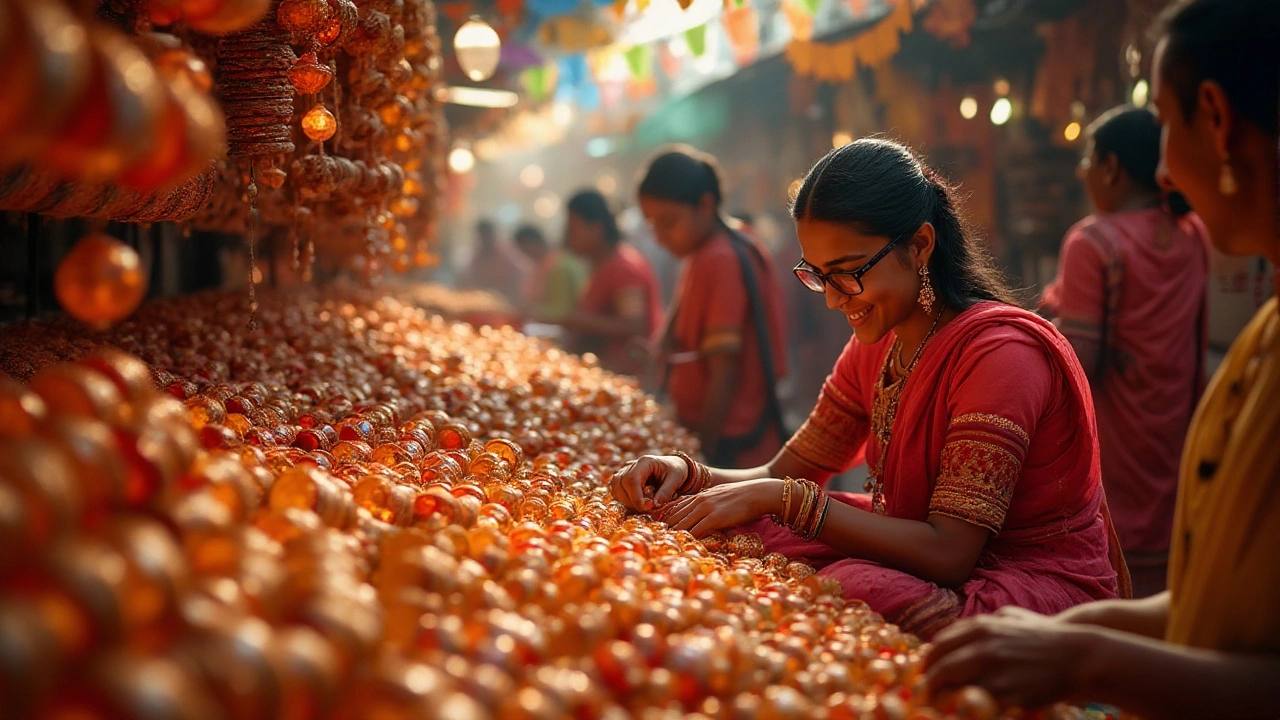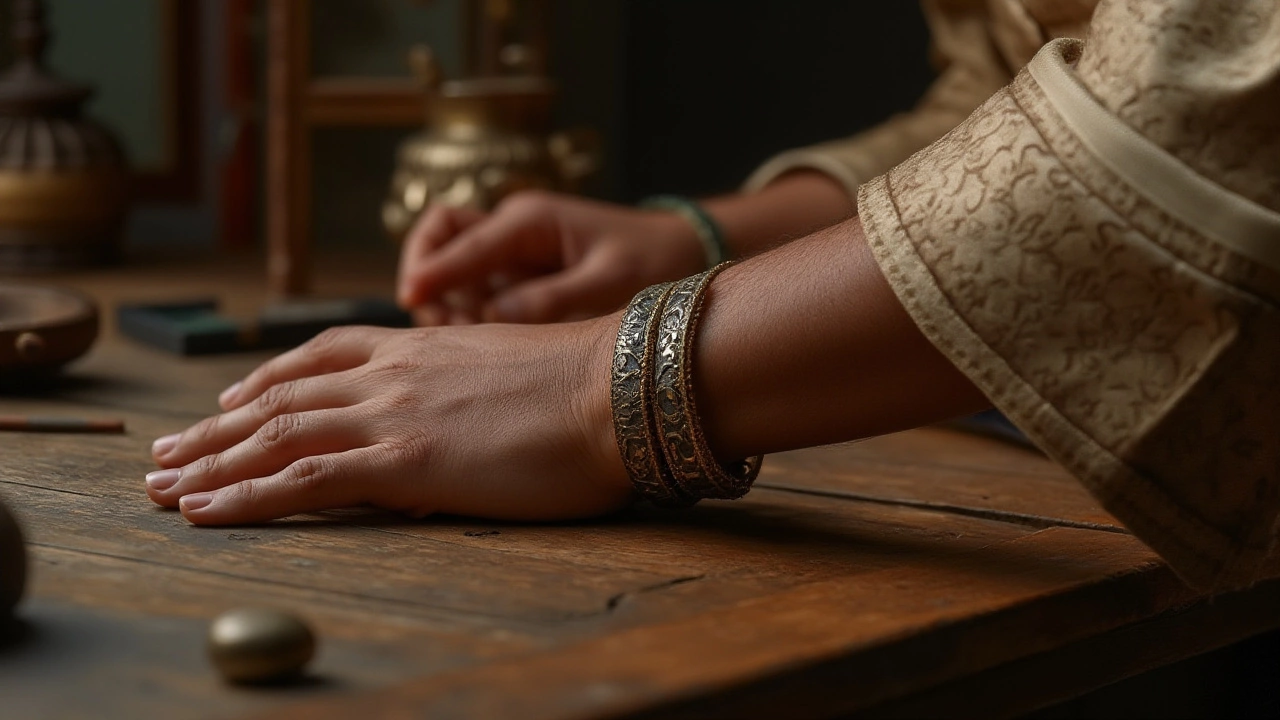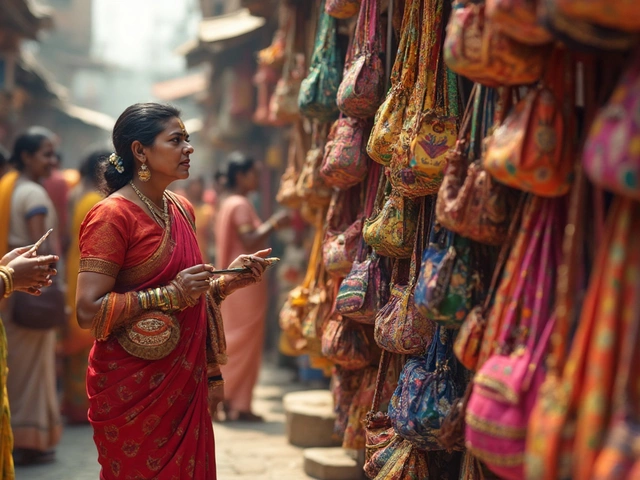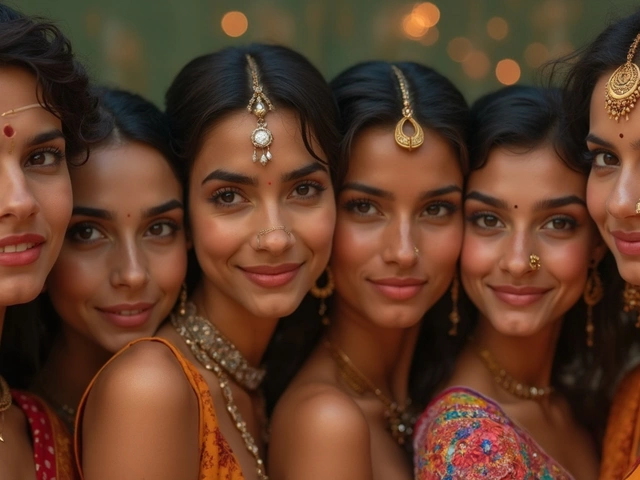
Bangles and kada are cherished pieces of traditional Indian jewelry, each with its own unique place in the culture. While both adorn the wrist, the journey of these accessories started hundreds of years ago, weaving tales of tradition, fashion, and heritage.
Bangles are often thought of as the dainty companions to women's wrists. They can be seen in a myriad of colors, adorned with beautiful intricate designs that catch the eye. Typically, bangles are worn in multiples, their gentle clinking becoming the sound of celebration and joy.
Kada, on the other hand, represents strength and solid elegance. It is often a solitary band, thicker and broader, sometimes bearing profound engravings or a simple polished exterior. Commonly worn by both men and women, kada carries a robust presence on the wrist, telling stories of valor and tradition.
As we delve deeper, it's fascinating to see how cultural nuances and personal preferences have shaped the styles of bangles and kada, making them more than just decorative pieces, but bearers of identity and legacy.
Cultural Significance
The cultural tapestry of India is as vibrant and diverse as its regions. Amongst the various elements that stitch this tapestry together, the bangles and kada stand as significant symbols, each carrying its own profound narratives. In many Indian cultures, bangles are not merely jewelry but a reflection of the circle of life. Their unbroken design is believed to symbolize eternity, and the very sound of a bangle is said to bring prosperity and abundance. These charming ornaments have an inherent association with femininity, and wearing them is often linked to a prosperous married life. Historical evidence of bangles dates back to the ancient Mohenjo-Daro civilization, where archaeologists discovered terracotta bangles in the ruins, signifying their longstanding presence in Indian culture.
The kada, in contrast, is a powerful emblem of strength and integrity, often donned by both men and women across India. It is more than an accessory; it's a representation of the Sikh faith, epitomizing the eternal nature of God with its circular form. The kada is traditionally made of iron or steel, chosen for its strength and resilience, serving as a reminder of the strength required to uphold righteousness in the face of challenges. Embraced by nobles and warriors alike, the kada has grown to signify discipline, honor, and connection to one's roots, further echoing its critical role in Indian culture.
The societal importance of these ornamental pieces has only grown with time. Festivals and rituals are incomplete without the rhythmic jingling of bangles adorning women's wrists, each color and design often chosen with care to match the occasion. Across regions like Maharashtra, Rajasthan, and Bengal, the bangle has specific styles ingrained in their local customs and traditions. As for the kada, its secular appeal has transcended borders, embodying cultural pride not only within India but for the Indian diaspora worldwide. These traditional pieces serve as emotional anchors, keeping people tied to their heritage amidst a rapidly changing world.
"Jewelry has the power to be this one little thing that can make you feel unique," said Jennie Kwon, reflecting the personal and cultural sentiment carried by accessories like bangles and kada in people's lives.
Today, the bangles and kada continue to maintain their traditional roots while evolving with fashion trends. Designers now experiment with new materials such as acrylic and brass, introducing contemporary designs without compromising on cultural significance. Regardless of where they are donned, these pieces carry with them a timeless legacy, continuing to inspire and speak to generations across varied landscapes.
Design and Material
When delving into the world of Indian jewelry, the essence of bangles and kada lies not just in their outward appearance but also in their intricate design and the materials used. Bangles often personify elegance with their slender shapes and are crafted from a variety of materials, from precious metals like gold and silver to more affordable options such as glass, wood, and plastic. This versatility in materials makes bangles accessible to people from all walks of life, reflecting both affluence and simplicity. The design of bangles often features elaborate patterns, gem embellishments, and enamel work, showcasing the artisans' exceptional craftsmanship. Traditional motifs, floral patterns, and vibrant colors dominate the scene, each adding its own story to the piece. This wide range allows individuals to choose bangles that perfectly suit their personality and style, whether it be for a festive occasion or an everyday adornment.
On the other hand, the kada stands out with its bold and formidable design. Typically thicker and more substantial than bangles, kada is usually made of metal, although modern variations sometimes include materials like wood or ivory. Gold and silver kada are particularly popular, often signifying prosperity and status in various cultural contexts. The surface of a kada can vary from a simple polish to being richly engraved with traditional symbols such as religious deities, making it a powerful piece of jewelry. Unlike bangles, kada is generally worn solo, its singular presence powerful enough to catch the eye and command respect. A well-known Punjabi proverb encapsulates the essence of kada's importance in Punjabi culture:
"Je byah karaye bina kade, tan ki samjheya o us de bale ni pateya o."—If the wedding is performed without a kada, then it is believed that the tradition is incomplete.
The choice of materials for both bangles and kada often reflects the wearer's cultural background, occasion, and personal preference. Gold, for instance, is often the material of choice for weddings and festivals, symbolizing wealth and long-lasting commitment. Silver kada can be seen as a staple among communities where it symbolizes moonlight's peace and calm. Some regions may favor wooden bangles for their earthy appeal and lightweight nature, providing a rustic look that fashions well in a more casual setting. Bangles designed for formal events are sometimes encrusted with semi-precious stones and pearls, adding a layer of opulence and allure. In many Indian states, specific materials might even be associated with good fortune or protection against evil, intertwining beliefs further into the fabric of design.
Functional Elements and Cultural Touch
Aside from aesthetic appeal, both bangles and kada carry functional roles in traditional Indian societies. A robust kada might serve as a token of protection, acting as a faithful guardian for the wearer, while bangles, clinking together, are often believed to ward off negative energy. The meticulous attention to detail in designing these accessories is not merely for embellishment but also to preserve cultural narratives that have been passed down through generations. Whether it's a gilded bangle embossed with peacock motifs or a kada with intricate carvings of ancient mandalas, every piece manifests a cultural heritage that stretches back centuries. The way these elements come together to form bangles and kada testify to the timeless nature of Indian jewelry and its undeniable place within the tapestry of global fashion.

Men and Women Preferences
When it comes to choosing between bangles and kada, the preferences often reflect not only the style and aesthetic appeal but also cultural norms and traditional beliefs. For women in India, bangles hold a significant place. They aren't just ornaments but carriers of emotions and traditions. From the delicate glass bangles worn en masse to the gold and diamond-studded pieces that highlight one's stature and style, bangles have always been a preferred choice for women. They often symbolize marital status, prosperity, and happiness. Each region in India adds its twist to these charming circles, giving birth to various styles such as 'Lac' from Rajasthan or 'Feroza' from Bengal. A woman in India, especially during marriage ceremonies or festivals, is rarely seen without her jingling companion on the wrist.
In contrast, the kada is predominantly an essential part of men’s jewelry, especially in places like Punjab and Rajasthan. The broad, singular band, often metallic, is a popular choice, representing masculinity and strength. Many men use the kada as a daily accessory; it carries religious significance for Sikhs, symbolizing unity and the eternal nature of God. Men and women of the Sikh community widely wear it as a tribute to their faith. The rustic designs of the kada cater to those who appreciate timeless, bold pieces. It’s not unusual to see an heirloom kada passed through generations, polished and heavy with history.
The modern fashion world, however, doesn't shy away from bending norms. Today, you'll often find women sporting a kada to create a bold fashion statement, while men are not far behind in experimenting with bejeweled bangles on special occasions. It's a beautiful mesh where traditions meet contemporary style, allowing individuals to express themselves freely without being confined by gender stereotypes. As noted by a famous Indian jewelry designer, "Jewelry today is about personal expression. Whether it is bangles or a kada, wear what resonates with your personal journey." This shift not only showcases the evolution of traditional jewelry but also speaks volumes about the changing societal narratives that celebrate individuality.
Tips for Wearing
Embracing the elegance and strength of bangles and kada can truly transform your ensemble. When choosing these timeless pieces, it's essential to consider the outfit and occasion. Bangles, with their delicate and colorful designs, lend themselves beautifully to traditional attire such as sarees or lehengas. Their brilliant sparkle and intricate patterns can accentuate the vibrant fabrics, bringing an added touch of festivity to the look. For a more subdued, everyday elegance, glass or metal bangles can add a touch of grace without overpowering the outfit. In contrast, a kada acts as a statement piece, making it perfect for minimalistic or modern ensembles. Pairing a silver or brass kada with a casual kurta or even a western outfit like jeans can strike a chic balance between traditional and contemporary styles.
The art of stacking bangles is a technique that can elevate any attire significantly. A popular choice in weddings and festivals, stacking a variety of bangles – mixing colors, textures, and materials – creates a symphony of sound and color on the wrist. When stacking, consider keeping the heavier, more ornate bangles at the center of the wrist, flanked by simpler ones. This forms a beautiful focal point, ensuring the eyes are drawn to the detailed work at the heart of the stack. Kajal Aggarwal, an admired Bollywood actress, says, "Bangles are like music to my wrists. They bring grace and rhythm to every movement." It's about letting the layers complement rather than clash with one another, showcasing the blend of bohemian and classic vibes.
Kada, cherished for their bold and powerful essence, offer a different kind of styling experience. Given its singular statement, pairing a kada requires deliberation about the balance with other accessories. Often, kada are worn alone on one wrist, allowing them to showcase their own glory. If you're in the mood to mix, pair it with a matching earring or a ring on the opposite hand. This keeps the focus on the kada without making the jewelry feel overwhelming. However, for those seeking a more pronounced impact, especially with ethnic outfits, twin kada on both hands can impart a regal and balanced appearance. Understanding the kada's cultural symbolism – strength and integrity – adds an element of intention to your outfit.
There's an interesting cultural dimension to wearing these pieces, involving traditional beliefs and rituals. In many Indian cultures, bangles signify marriage and fertility, worn by married women to bring prosperity and happiness. For special religious occasions, gold bangles or kada are often preferred, symbolizing wealth and purity. Wearing these items respectfully and understanding the stories they carry adds meaning to the aesthetic pleasure they provide. However, shifting tides in fashion have made these pieces versatile, now adorned by all genders and ages, across various settings and alike.
For ensuring comfort and appropriateness, pay attention to the fit and material. Bangles should neither be too tight, causing discomfort, nor too loose, prone to slipping off, defining a perfect wrist-hugging fit. Kada require a sizing where they easily slide past the knuckles but sit comfortably on the wrist. For those opting for metal pieces, especially in climates as warm as ours here in Sydney, ensure the material is hypoallergenic to avoid skin irritation from prolonged use. Consider the specific climates and settings you plan to wear these elegant pieces. Additionally, choose features like hidden clasps or open ends in kada to ensure easy wearability and adjustability.


